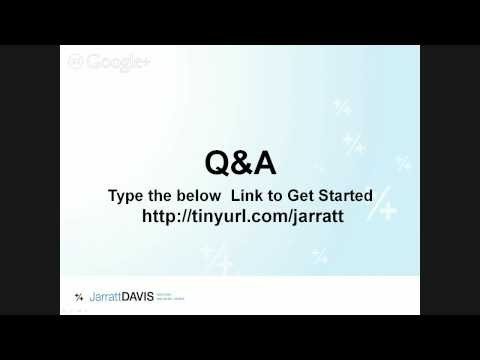Do Forex Brokers Hunt Your Stop Losses (Part 2 of 2) Jarratt Davis
Post on: 26 Июнь, 2015 No Comment

Saturday, March 20th, 2010 by Jarratt
Before we begin, it’s important to note that I have simplified a lot of the concepts for the purposes of this illustration; so things are not quite as simple and straight forward as I suggest in this post. Bear in mind that I am only trying to explain the basic principles.
In the last post we looked at the concept of stop hunting and why retail brokers probably do not hunt the stops of their self-trading clients (you). Nonetheless, that is not to say it has never happened in the history of Forex trading; it simply means that nowadays, with the increase in regulation and the wide selection of credible brokers available, it should not be a concern.
At the end of the previous post, I also mentioned that elsewhere in the markets, stop hunting did exist and that it does directly affect us on a regular basis. This concept is that we will look at now.
So, if it isn’t the brokers that are hunting your stops then who is it and why are they doing it?
To better understand this, we need to develop a deeper insight into how the larger institutions operate and how their operations affect our trading plans. The distinction here is purely down to trade size; so even though I was trading millions of dollars at the height of my fund trading career, I was still considered a tiny fish in the same pool as the retail clients trading their own micro-accounts.
When looking for trading opportunities, the whole basis of our operation is to calculate which way the market might go next. More importantly, we need to time it stringently so that we enter the market in that direction as it starts taking off.
This is known as the Perfect Trade.
A large institution such as a bank, on the other hand, will significantly differ in the way that they trade. These are the players creating the moves and thus they have to time things completely differently.
Now, imagine that you are a large bank and that you have previously bought into the market and the market has now rallied so that you are in profit. The problem for you is that when you engage the market, you move it. This means that when you click ‘buy’, the price almost always goes up, until your order can be satisfied with enough sellers. This, of course, ends up giving you a worse price. This is called slippage, and is a big issue for large scale traders.
Another major issue is that of taking profits. Just like slippage, the same rules apply; if you just dump your position, the market is likely to revert against you (when closing a buy order, you must sell it back to the market and that short, can push the price back down towards your entry point, wiping out some of the profits).
Its a troubling problem as Im sure youll agree.
So the question is; how do large players exit their positions whilst ensuring that they do not push the price against themselves?
The answer is, of course, stop hunting!
Here is an example:

The Large Player (LP) is long in position and wants to exit and take their profits.
The price is just below a level of strong resistance and the LP can see that there is likely to be a lot of traders placing Sell Orders at that level. In anticipation of the price moving down from that level, they can also see any orders that are placed on their books at these areas; providing further confirmation of pools of liquidity being present.
Additionally, the LP now knows that there is likely to be a nice big pool of Stop Loss Orders just above that level of resistance. This is where those traders will be cutting their losses in the event of the resistance failing to push price down.
These Stop Losses will of course, be Buying Orders.
Remember, the LP wants to sell their position back to the market so in order to do this (and to avoid pushing the price back down against themselves), they need enough buyers at a single price.
The pool of Stop Loss Orders (Buying Orders) is perfect for this.
The LP then calculates the cost of slightly pushing the price up, through the resistance level to the pool of Stop Loss Orders. Then, if it’s cost effective to do so, the LP forces the price to spike up into the orders. Here, they close their main position and due to their order size, avoid the price coming down.
As retail traders, we see these spikes, take out our stops and then drop in our intended direction and immediately get annoyed and think there is a conspiracy to get us. The truth is that there is a conspiracy; but it’s not personal and it’s usually the larger traders and not your broker working against you in this manner.














